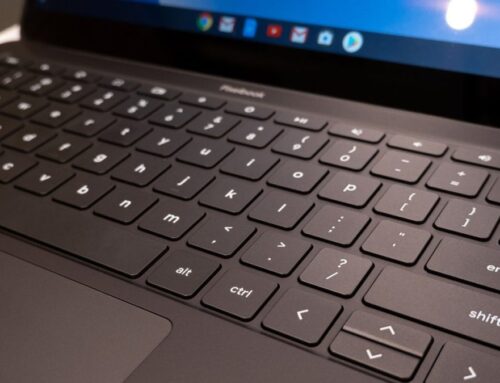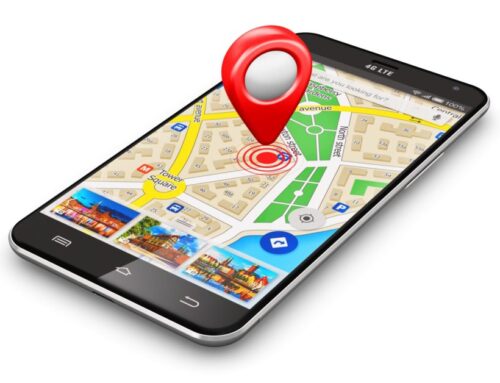Windows 10 is designed to be an always-connected, always-up-to-date operating system. It’s the most data-hungry version of Windows yet, but you can restrain it from going all-out on your home network with a few tricks.
Check Per-Application Data Usage
Despite all Windows 10’s automatic updates, the majority of data usage on your PC probably comes from the applications you use. Windows 10 includes a new “Data Usage” tool that allows you to see exactly how much data each application on your computer has been using. This will help you track down data-hungry programs, including third-party ones.
To check your data usage over the last 30 days, open the Settings app from your Start menu and head to Network & Internet > Data Usage. You’ll see a graph showing how much data your Windows 10 PC has used over the last 30 days, broken down between Wi-Fi and wired Ethernet.

To view which applications have been using data, click or tap “Usage Details” here. You’ll see a list of applications that have used data over the last 30 days, and the applications that have used the most data will be at the top of the list. This shows you exactly where your data is going. For example, you can see how exactly much data was used by your web browser of choice.

Prevent Automatic Windows Updates
Windows 10 normally downloads and installs updates automatically without your input. Microsoft updates Windows 10 very often, and those updates can be fairly large. For example, Windows 10’s first big update, known as either the “November update” or “version 1511,” was about 3GB in size on its own.
There are several ways to prevent Windows 10 from automatically downloading updates, depending on the edition of Windows 10 you have. To do this on any PC–even ones with Windows 10 Home–set your home Wi-Fi network as a metered connection. Windows 10 won’t automatically download updates on that connection, but instead will prompt you. You can then choose when to download updates, or take your computer to another Wi-Fi network and update from that other network.
For some reason, Windows 10 doesn’t provide a way to set a wired Ethernet connection as a metered connection, even though many ISPs impose bandwidth caps. You’ll need to connect over Wi-Fi instead of a wired connection if you want to delay automatic updates.
To set your connection as a metered one, open the Settings app, and go to Network & Internet > Wi-Fi. Scroll down below the list of Wi-Fi networks and select “Advanced Options.” Enable the “Set as Metered Connection” slider here. This will only affect the Wi-Fi network you’re currently connected to, so Windows 10 will start automatically downloading updates when you connect to another network. To set another Wi-Fi network as metered, you’ll need to connect to it and change the option again. Windows 10 remembers this option for each Wi-Fi network you enable it for, however, so it will be automatically set the next time you connect.

Disable Automatic Peer-to-Peer Update Sharing
By default, Windows 10 automatically uses your Internet connection to upload Windows and app updates to other Windows 10 PCs. It’s a BitTorrent-style system for distributing updates to Windows 10 users. Unlike the average BitTorrent client, Windows does this silently in the background without warning you first. Windows 10 won’t upload updates if you set a connection as metered, but you can also turn it off directly.
To prevent the automatic uploads on all networks, you’ll need to open the Settings app, go to Update & Security > Windows Update and click “Advanced Options.” Click “Choose How Updates are Delivered” and set this option to just “PCs on My Local Network” or disable it.

Prevent Automatic App Updates and Live Tile Updates
If you set a Wi-Fi network as metered, Windows 10 won’t automatically install app updates and fetch data for live tiles when you’re connected to that network. However, you can also prevent this from happening on all networks.
To prevent Windows 10 from updating Windows Store apps on its own, open the Store app. Click or tap your profile picture near the search box and select “Settings.” Disable the “Update Apps Automatically” checkbox. You can still update your Store apps manually from the Windows Store app, but Windows won’t automatically download app updates on its own.
This is useful even if you haven’t installed any apps from the Store. Many of Windows 10’s included apps are updated through the Store.

Those live tiles on your Start menu use a bit of data, too–although not much. You won’t save much data by disabling live tiles, but you can do it if you want to save every little bit.
To prevent a tile from automatically downloading and displaying new data, right-click or long-press it in the Start menu, point to “More,” and select “Turn Live Tile Off.”

Save Data on Web Browsing
There’s a good chance that a lot of your data usage comes from your web browser–you can see just how much by looking at the Data Usage screen.
To save data on this web browsing, use a web browser that includes a built-in compressing proxy feature. The web browser will route the data through other servers where it’s compressed before being sent to you. This is normally a feature common on smartphones, not desktop PCs, but if you really need to save data–maybe you have a satellite Internet connection with a very low data cap, for example–you may want to do this.
Google offers an official Data Saver extension for Google Chrome, and it functions the same as the Data Saver feature built into the Chrome browser on Android and iPhone. Install that into Google, and you’re good to go. The Opera browser also has a “Turbo mode“, which works similarly, if you’re more of an Opera fan.
Once you’ve gotten Windows 10’s automatic updates–and automatic uploading of updates–under control, the Windows operating system should be using very little data on its own. Most of your data use will come from your web browser and the other apps you use. You’ll need to keep an eye on those apps and configure them to use less data. For example, you could configure Steam and other game stores to not automatically download updates for your installed games.
Source: http://www.howtogeek.com/249254/how-to-stop-windows-10-from-using-so-much-data/




